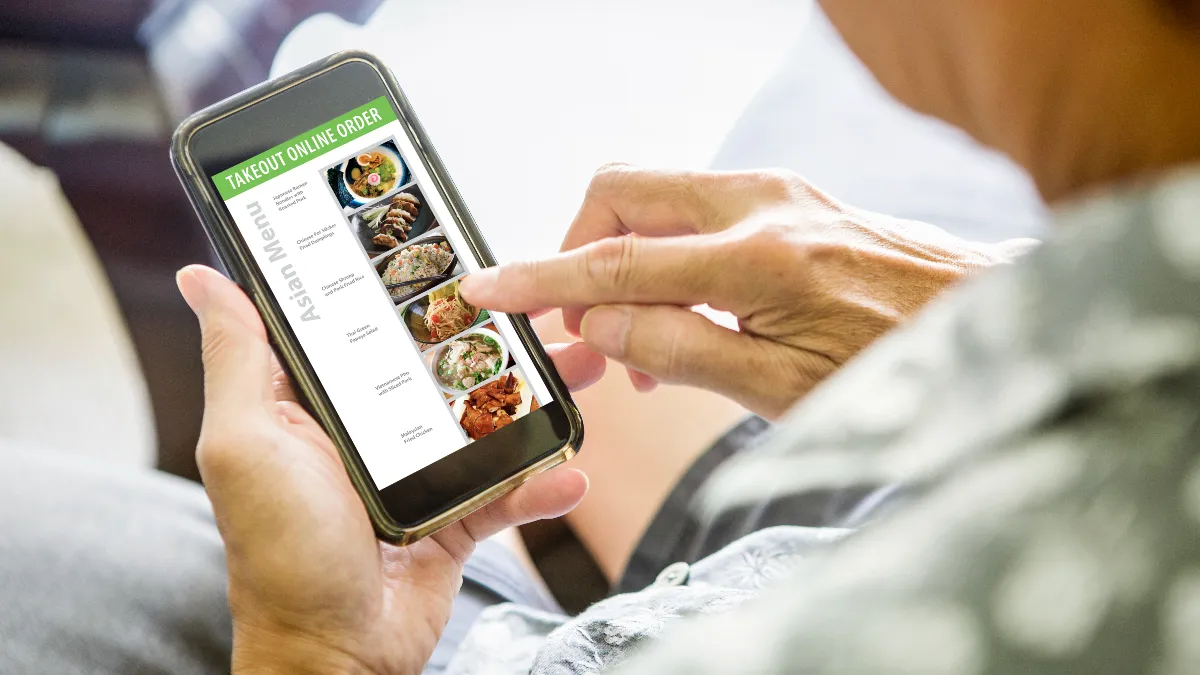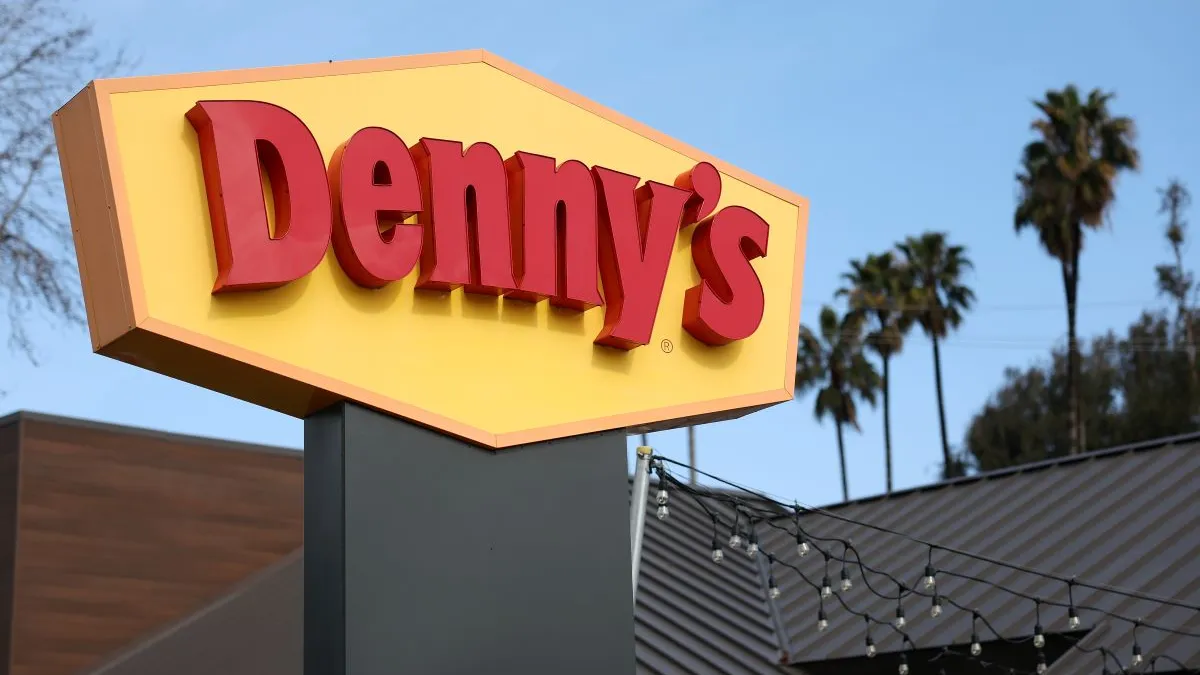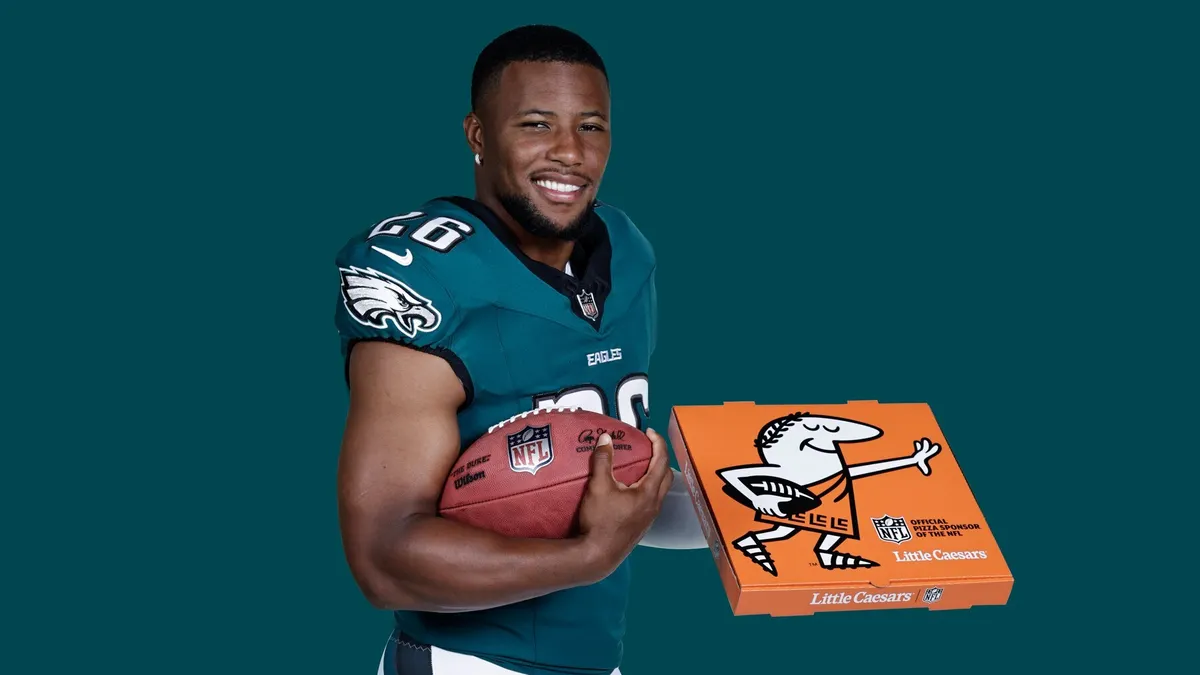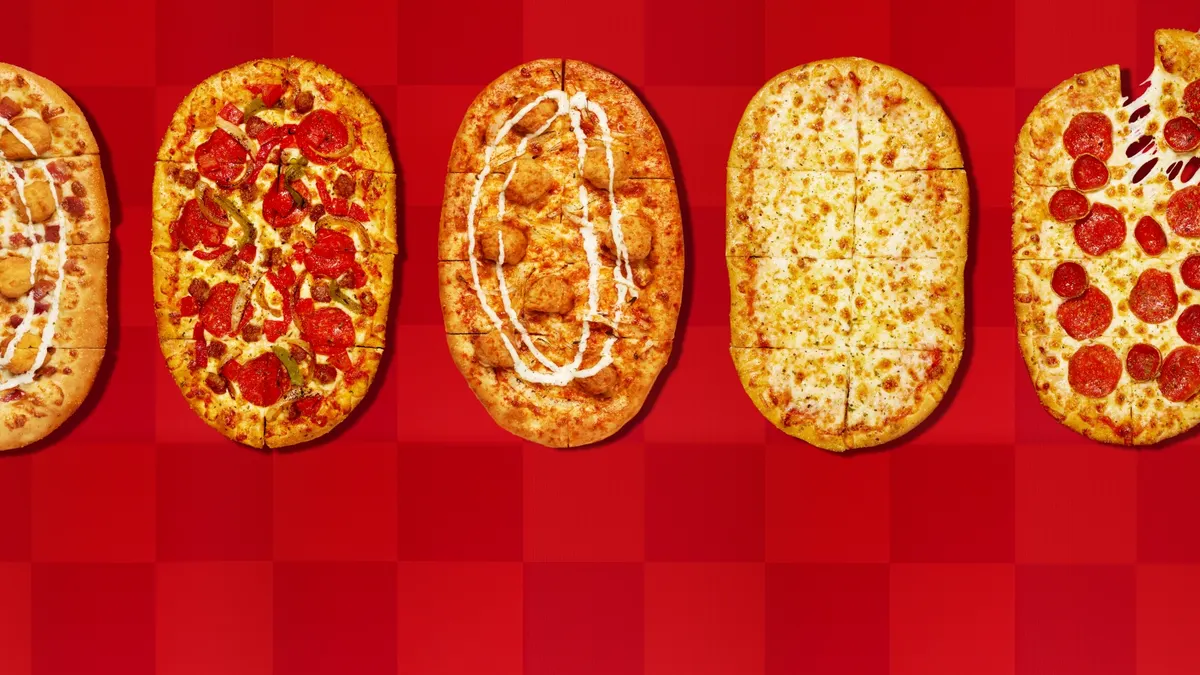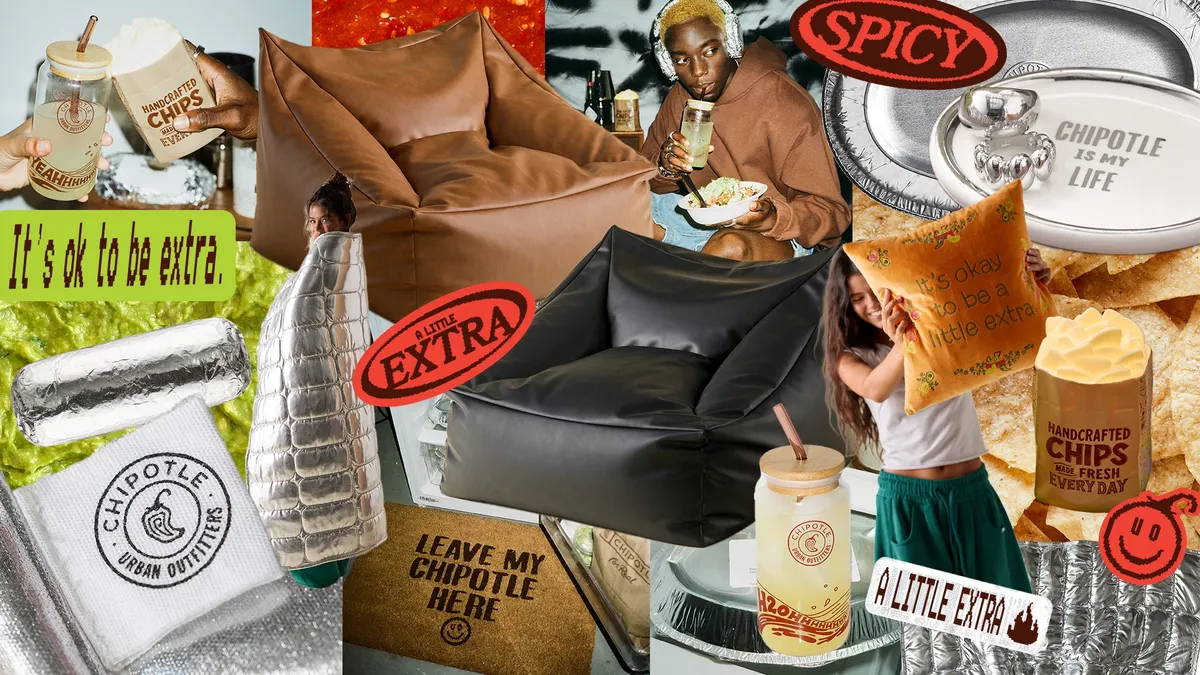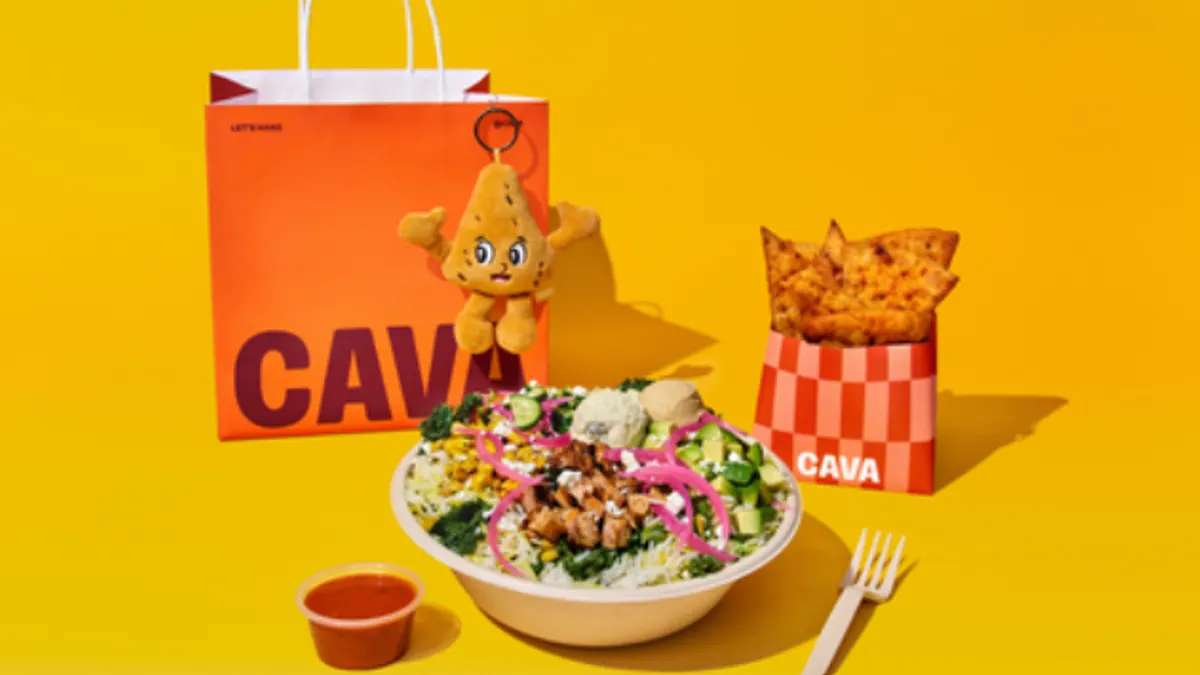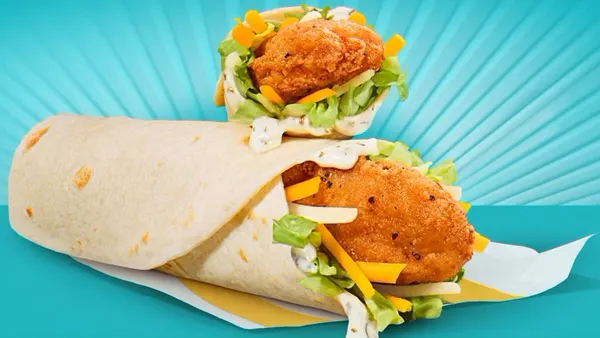CHICAGO — At the height of the pandemic, some restaurants began to seek out virtual brand partnerships or develop their own digital-only concepts as a band-aid for revenue loss. But virtual brands hold much more potential — and require much more thoughtful precision — than the bolt-on side hustle some operators believe these concepts to be, Nextbite Chief Growth Officer Geoff Madding told Restaurant Dive at the National Restaurant Association Show.
“[Virtual brands were] definitely a life preserver, and that’s great. We were happy to help with that. But we really believe the industry is moving this way,” Madding said.
Nextbite, which is powered by online ordering platform Ordermark, creates turnkey digital brands that can be applied to a broad swath of restaurants depending on their latent capacity and staffing levels. Many of the company’s concepts are built around buzzy celebrity ambassadors, including chef Tom Colicchio’s sandwich concept ‘Wichcraft and Wiz Khalifa’s Packed Bowls, which was announced last week.
Nextbite can develop virtual brand innovation easily with enterprise chains like IHOP, which launched Thrilled Cheese and Super Mega Dilla in March, thanks to available financing, supply chain and marketing capabilities, Madding said. But half of the company’s client mix is made up of small operators, and independents have the ability to make virtual brands successful on their own as well, he said.
To start, operators need to answer a few key questions.
“Is there unmet demand in the marketplace by consumers you are trying to meet? Is it going to be an operational fit, so not disruptive to your kitchen?” Madding said. “Then if you take it as seriously as your brick-and-mortar business, you’ll be successful. If you don’t, you probably won’t,” Madding said.
Forty-one percent of independent restaurants already operate virtual brands, according to a January report commissioned by Grubhub and executed by Technomic, and 68% of these respondents say their concepts are permanent additions. Going forward, 46% of independents plan to open three or more virtual brands over the next year.
For restaurants looking to take the leap into virtual operations, Madding lays out what to consider before investing and what opportunities the future may hold.
This interview has been edited for clarity and brevity.
RESTAURANT DIVE: I’m seeing a lot of virtual brands that are very focused on current trends. Are these concepts becoming LTOs?
GEOFF MADDING: It can feel like that operationally — you have a new product, you have to do some new marketing, maybe you’re trying to capture a specific trend or a season. At the core, it always has to start with consumer expectations, meeting or exceeding, plus food that is of a certain quality, plus an experience that is delivered in some way. It’s not a small amount of work to do that. Have you figured out the math behind that? Is it going to be profitable for you? Are you using the virtual brand to generate excitement around your own brand?
I like to think virtual brands can be more of an extended LTO, where as opposed to a few months you could have a few years of success with it. The nice thing about this approach is that trends change. If you build a virtual brand that does really well for three to five years and then you rebrand to something else, there’s not much sunk cost there and it’s pretty easy to pivot.
To deliver a compelling experience, do virtual brands need a hook like a celebrity partnership?
MADDING: I think in some way you’re going to have to stand out because it has become a very crowded marketplace. So the question is how are you standing out? That can be done by partnering with celebrities, which we’ve done, partnering with celebrity chefs, which we’ve done. Brand equity that was there already can help. And you can stand out by launching in an interesting way, by marketing in an interesting way, and by finding pockets of unmet demand.
For example, some of our breakfast concepts are our best-selling brands, and there was a thought not that long ago that breakfast delivery is not gonna work. But we’ve seen a ton of demand, and there’s not enough supply for it. So what you can do is be first to market in those areas and start building a consumer base, so when it does get crowded — if you’ve done a good job — consumers are still going to come to you because they trust you.
What does a restaurant need to make a virtual brand successful?
MADDING: The single most predictive thing for us, for the success of our partners, is that we have a good concept match with what they’re doing because it needs to fit into their operations. But it needs to be truly incremental to their existing market or occasion use, and we can’t be cannibalizing the business. So getting the right concept, or concepts, to fit is really important. That’s number one.
Number two, our partners need to think of virtual brand deployment as strategic and not an aside they can half do. They really have to train their staff on it, we have to really reinforce quality, we have to monitor it closely, and they have to be very invested in that process. If they are, they are literally always successful.
Let’s zoom in on that. What nuts and bolts are necessary?
MADDING: It starts with excess capacity. And what I mean by that is, do you have kitchen staff on site on certain days and dayparts that are not as busy as they could be? If the answer is yes, you’re probably a good candidate. Everything else is what are you a good candidate for. For instance, you could be a sandwich shop with limited equipment, but you have a panini press. Then you could do our ‘Wichcraft virtual brand, especially if you tend to be busier at night, because this brand is more busy during the day. That’s the kind of match you need at the start when we’re looking at this.
Then it almost becomes a math problem. What equipment do you have? What SKUs do you already bring in? What kind of food are you making? When are those slower days? And then for us, we see if we have brands that look like that. For our larger partners, we may not, and then we may go ahead and make brands for them. We look very closely at who their customers are; when those folks are ordering; when it’s not as busy; how to get incremental reach on different occasions for those existing customers and how to acquire new customers.
That can be done by any company. If you’re a small business, you can do it. It’s easier for us because we have a lot of data. We have a lot of resources. It’s not impossible for small businesses, but it’s tough… You can’t just have something that consumers want, and you can’t just have something that works in your operations. You have to have both.”
There’s been discussion of how virtual brands could offer a gateway to Web3. What opportunities are you seeing?
MADDING: It’s clearly going to be a technology that’s massively disruptive to our space. … We’re always trying to think about ‘If something crazy happens, how are we going to be able to play in that world?’ The nice thing about having virtual brands is you don’t have the serious capital investment problems, and also potentially some of the cost problems, that you do with physical locations. So you’re able to pivot very quickly as we see new technologies and new avenues pop up. It’s not like we’re steering an aircraft carrier. We’ve got a speedboat that you can quickly turn around and take advantage of stuff as it comes along… We’re in a space where if we can think of something, we can probably do it… But Web3 doesn’t have to displace restaurants. Restaurants can take advantage of all these other channels and do all this other stuff to enable them to do business. So that's the exciting thing to me.
How do you see the virtual brand space maturing?
MADDING: I think we’re gonna have to grow up for a while — eventually we will mature. But we have a lot of fun toddler and teenage years ahead of us. I think we’ve barely scratched the surface of what’s going on, because people are just starting to take virtual brands seriously. They’re just starting to lean into them. We’re getting some really smart people who are starting to focus on it. Anytime that happens, that’s when things really start to get fun.



